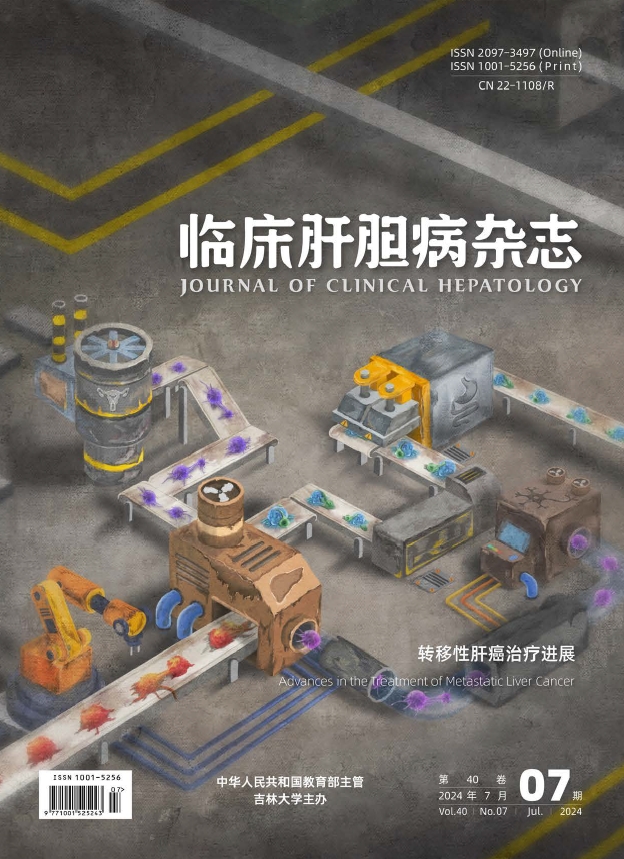| [1] |
|
| [2] |
TIAN DD, SUN YH, XU HH, et al. The emergence and epidemic characteristics of the highly mutated SARS-CoV-2 Omicron variant[J]. J Med Virol, 2022, 94( 6): 2376- 2383. DOI: 10.1002/jmv.27643. |
| [3] |
HU B, GUO H, ZHOU P, et al. Characteristics of SARS-CoV-2 and COVID-19[J]. Nat Rev Microbiol, 2021, 19( 3): 141- 154. DOI: 10.1038/s41579-020-00459-7. |
| [4] |
SANYAOLU A, OKORIE C, MARINKOVIC A, et al. Comorbidity and its impact on patients with COVID-19[J]. SN Compr Clin Med, 2020, 2( 8): 1069- 1076. DOI: 10.1007/s42399-020-00363-4. |
| [5] |
BERLIN DA, GULICK RM, MARTINEZ FJ. Severe Covid-19[J]. N Engl J Med, 2020, 383( 25): 2451- 2460. DOI: 10.1056/nejmcp2009575. |
| [6] |
BREVINI T, MAES M, WEBB GJ, et al. FXR inhibition may protect from SARS-CoV-2 infection by reducing ACE2[J]. Nature, 2023, 615( 7950): 134- 142. DOI: 10.1038/s41586-022-05594-0. |
| [7] |
European Association for the Study of the Liver. EASL Clinical Practice Guidelines: The diagnosis and management of patients with primary biliary cholangitis[J]. J Hepatol, 2017, 67( 1): 145- 172. DOI: 10.1016/j.jhep.2017.03.022. |
| [8] |
WANG L, HAN Y. Diagnosis and treatment of primary biliary cholangitis: Current status and challenges[J]. J Clin Hepatol, 2021, 37( 10): 2257- 2261. DOI: 10.3969/j.issn.1001-5256.2021.10.001. |
| [9] |
WANNER N, ANDRIEUX G, BADIA-I-MOMPEL P, et al. Molecular consequences of SARS-CoV-2 liver tropism[J]. Nat Metab, 2022, 4( 3): 310- 319. DOI: 10.1038/s42255-022-00552-6. |
| [10] |
GAZIANO L, GIAMBARTOLOMEI C, PEREIRA AC, et al. Actionable druggable genome-wide Mendelian randomization identifies repurposing opportunities for COVID-19[J]. Nat Med, 2021, 27( 4): 668- 676. DOI: 10.1038/s41591-021-01310-z. |
| [11] |
IOANNOU GN, LOCKE E, GREEN P, et al. Risk factors for hospitalization, mechanical ventilation, or death among 10 131 US veterans with SARS-CoV-2 infection[J]. JAMA Netw Open, 2020, 3( 9): e2022310. DOI: 10.1001/jamanetworkopen.2020.22310. |
| [12] |
WILLIAMSON EJ, WALKER AJ, BHASKARAN K, et al. Factors associated with COVID-19-related death using OpenSAFELY[J]. Nature, 2020, 584( 7821): 430- 436. DOI: 10.1038/s41586-020-2521-4. |
| [13] |
KHANDKER SS, GODMAN B, JAWAD MI, et al. A systematic review on COVID-19 vaccine strategies, their effectiveness, and issues[J]. Vaccines, 2021, 9( 12): 1387. DOI: 10.3390/vaccines9121387. |
| [14] |
TEIJARO JR, FARBER DL. COVID-19 vaccines: Modes of immune activation and future challenges[J]. Nat Rev Immunol, 2021, 21( 4): 195- 197. DOI: 10.1038/s41577-021-00526-x. |
| [15] |
MATHEW M, JOHN SB, SEBASTIAN J, et al. COVID-19 vaccine triggered autoimmune hepatitis: Case report[J]. Eur J Hosp Pharm, 2023, 30( 5): e27. DOI: 10.1136/ejhpharm-2022-003485. |
| [16] |
SHAHRANI S, SOOI CY, HILMI IN, et al. Autoimmune hepatitis(AIH) following coronavirus(COVID-19) vaccine-No longer exclusive to mRNA vaccine?[J]. Liver Int, 2022, 42( 10): 2344- 2345. DOI: 10.1111/liv.15350. |
| [17] |
ALBILLOS A, LARIO M, ÁLVAREZ-MON M. Cirrhosis-associated immune dysfunction: Distinctive features and clinical relevance[J]. J Hepatol, 2014, 61( 6): 1385- 1396. DOI: 10.1016/j.jhep.2014.08.010. |
| [18] |
NALBANDIAN A, SEHGAL K, GUPTA A, et al. Post-acute COVID-19 syndrome[J]. Nat Med, 2021, 27( 4): 601- 615. DOI: 10.1038/s41591-021-01283-z. |
| [19] |
COOPER S, TOBAR A, KONEN O, et al. Long COVID-19 liver manifestation in children[J]. J Pediatr Gastroenterol Nutr, 2022, 75( 3): 244- 251. DOI: 10.1097/MPG.0000000000003521. |
| [20] |
DENNIS A, WAMIL M, ALBERTS J, et al. Multiorgan impairment in low-risk individuals with post-COVID-19 syndrome: A prospective, community-based study[J]. BMJ Open, 2021, 11( 3): e048391. DOI: 10.1136/bmjopen-2020-048391. |
| [21] |
ROTH NC, KIM A, VITKOVSKI T, et al. Post-COVID-19 cholangiopathy: A novel entity[J]. Am J Gastroenterol, 2021, 116( 5): 1077- 1082. DOI: 10.14309/ajg.0000000000001154. |







 DownLoad:
DownLoad: